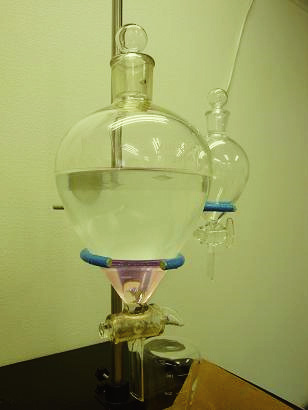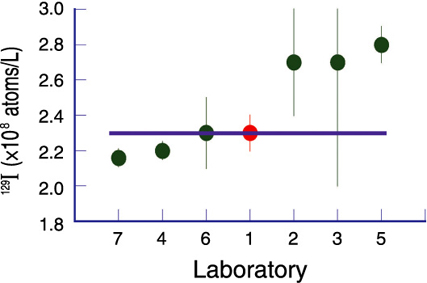Fig.14-32 The accelerator mass spectrometer at the Mutsu Office, Aomori Research and Development Center, participated in an interlaboratoy comparison exercise

Fig.14-33 Iodine extraction from seawater samples

Fig.14-34 Results of the interlaboratory comparison exercise
Iodine-129 (129I) is one of the long lived radionuclides, and its concentration is quite low in the environment. Due to the quite low concentration of 129I, it is difficult to measure 129I in environmental samples by neutron activation analysis which is known to have good sensitivity for 129I measurement. With the advent of Accelerator Mass Spectrometry (AMS), it is possible to measure 129I in environmental samples. The AMS at the Mutsu Office, Aomori Research and Development Center, was optimized for 129I measurement (Fig.14-32).
The International Atomic Energy Agency - Marine Environmental Laboratories (IAEA-MEL) produces certificated reference materials for accurate and precise determination of radionuclide samples in marine samples. However, IAEA-MEL did not have any certificated reference materials for 129I. For this reason, IAEA-MEL conducted a study to produce new certificated reference material for 129I in seawater samples.
To produce the certificated reference material, it is desirable to use measurements from many laboratories, but there are few laboratories that can measure 129I in seawater samples. IAEA-MEL requested measurements from 8 laboratories including AMS MUTSU after sampling in the Mediterranean Sea. We carried out iodine extraction from seawater samples (Fig.14-33) and then measured 129I by AMS three times. The 129I concentration in the sample from AMS MUTSU was obtained to be (2.28±0.14)×108 atoms/L based on the means and standard deviation from the three results.
In October 2009, IAEA-MEL released all data which were obtained from all participants. The results from 7 of the participants are shown in Fig.14-34. Since the concentration of the samples was determined to be 2.28×108 atoms/L, the new 129I certificated reference material was produced by this exercise.
The new 129I certificated reference material would strongly contribute not only to evaluation of the 129I concentration in environmental samples, but can also be used for oceanographic tracers in the geochemical field.